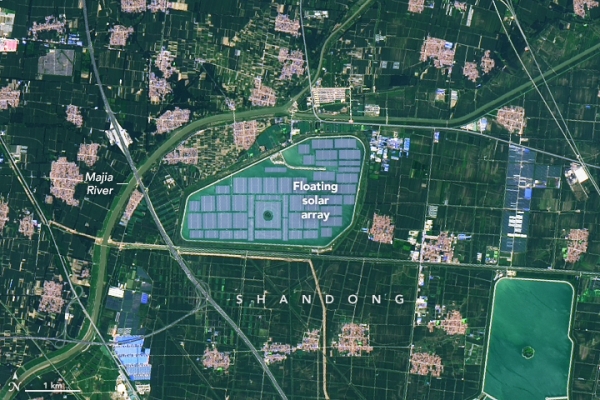By some estimates, countries might need to devote between 0.5 and 5 percent of their land area to solar panels in order to fully decarbonize their economies by 2050. Where space is at a premium, that could create tension with farmers, conservationists, and other groups over land usage.
Floating solar panels have been proposed as one solution to this problem. While still uncommon in the United States, floating photovoltaic systems, also called floatovoltaics, are growing in popularity worldwide, particularly in Asia.
On August 17, 2022, the Operational Land Imager-2 (OLI-2) on Landsat 9 captured this natural-color image of a new floating solar system on a reservoir near Dezhou in China’s Shandong province. Part of a citywide push to decarbonize the city’s economy, the 320-megawatt project was among the largest floatovoltaic projects in the world in 2022.
Floating solar offers a number of benefits, according to one team of researchers at the U.S. National Renewable Energy Laboratory (NREL). Floating solar panels stay cooler and run more efficiently in water. They help prevent the evaporation of water. And they may help minimize unwanted algae blooms by shading the water. Many reservoirs are also located near cities, making it easier to feed power into the urban grid than supplying it from remote solar farms in deserts.
Continue reading at NASA Earth Observatory
Image via NASA Earth Observatory


